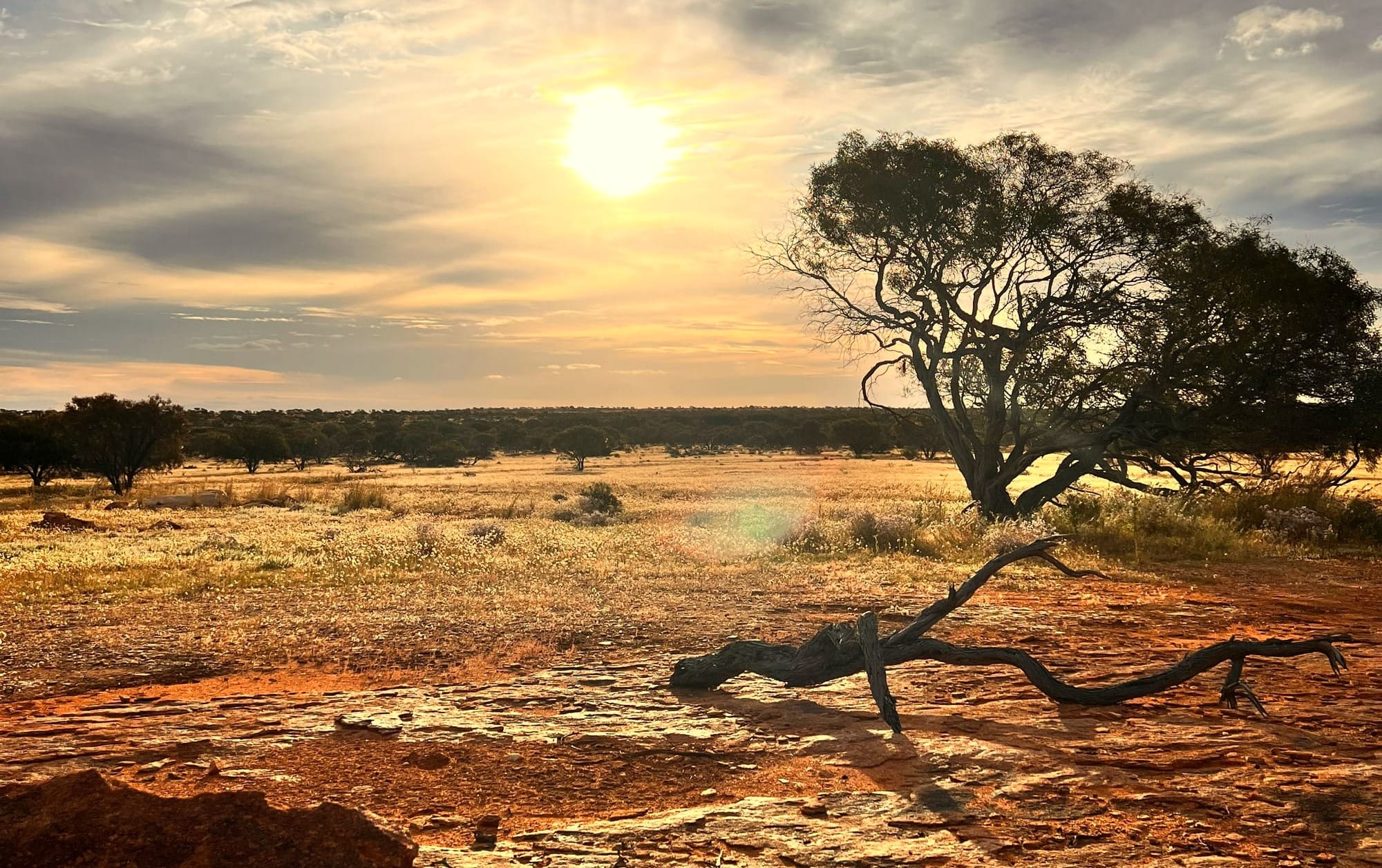Grappling with our future

Our future is uncertain and can be scary.
When I try to imagine our world over the coming decades, it can quickly become dystopian.
Dystopia causes visceral panic, a quick-rising tide of overwhelm, and a rapid shutdown. Stop thinking about it; focus on something more pleasant and soothing, and right now.
There is plenty to fret about. Our natural world (which includes us humans) is suffering, public discourse seems to be getting dumber and more polarised, a handful of technocrats hold disproportionate wealth and power, we've forgotten whatever we learned about war and seem keener to pull the trigger, we are starting to build machines that can outthink and outmanoeuvre us, and we are tinkering with our biology in profound ways.
You start to feel that pit of fear in your chest, that punch, the existential dread, the falling. It's deeply uncomfortable so we turn away from it; shut that thought train down before it ruins another day.
Why push through the discomfort?
I've worked in design and technology for 25 years. The wave of change in this period has been incredible, built on the shoulders of the Internet and the information age. Information and knowledge have become distributed and democratised; there are now more than five billion of us on the Internet.
It's fair to say this wave of change hasn't all been for the good. Given the tools to make people more intelligent and more connected, we've managed to create machines that addict, isolate, depress, misinform and divide us.
The tools are incredible, but what are they moving us towards? A brighter future? Who gets to have a brighter future?
I grew up in the 1970s and 80s, so I can remember what being unplugged was like. I feel like my knowledge at 13 was about 10% of what my son is currently holding at the same age, but there was much more white space, more downtime, no firehoses of distraction, and less anxiety.
The platforms of change are now expanding. In addition to the internet, we now have artificial intelligence, ever-growing connected devices, robots that are getting spooky good, and revolutions in understanding and engineering our biology.
Any and all of these things will likely have a much more significant impact than the internet has so far.
Design is a simple, positive opportunity.
When the time comes to design something, it's a rare opportunity to really put our minds to creating a brighter piece of our shared future.
When we design (or re-design) a service or a product, we can seize the opportunity to make it more effective, sustainable, and accessible to everyone. The future becomes brighter, little piece by little piece, as billions of us create it.
In my work, we innovate using design and technology to create positive change in complex spaces such as homelessness, family violence and mental health.
After spending about 5 minutes in these complex spaces, you understand that design and technology don't offer a silver bullet; they can't unpick systems and interdependency. However, they are valuable tools to nurture creativity, new thinking, and new perspectives, often needed to unlock real change.
We need new ways forward if we want to get somewhere different.
Design and innovation is a space where hyperbole and general bullshitting reign supreme. I'm not a zealot for any particular approach; for me, it's a bucket of methods that help groups of people see a different future and step towards it together.
A phrase from a company called Snook has stuck with me: practical innovation. It's not glossy, it's not an aspiration, and it requires lots of discomfort and hard work to push beyond the obvious and reach for something better.
Design can be influential simply because it's deliberate. We often work in spaces or sectors where the issue is not that any previous design is bad or wrong; it's just that it has never been designed at all. Systems grow organically, sporadically, in a decentralised way until someone identifies the opportunity to improve them. This makes the occasion precious; it only happens sometimes.
The methods and experience of designing can create an atmosphere and permission for people to pursue their values with some courage. Business as usual can feel like accepting your fate, working within broken systems, and being powerless to change things. Designing something for the future shifts and elevates responsibility–this little piece of the future needs to be based on our better selves.
I love the Mark Strand quote, "The future is always beginning now". The 'now' sharpens the opportunity and urgency of each day.
The future is neither fixed nor doomed.
Someone will design the future; it might as well be us.
With the intense hype around AI has come a wave of AI doomerism. The future is black; humans are redundant; we've been displaced.
This doomerism has some stiff competition in trying to take hold amongst the fears we were already chock-full of for climate change, the great extinction, growing inequality, politics metastasising and the next pandemic.
The doomerism shuts us down. We must fight through it; otherwise, we cede control of our future.
The best thing we can do is participate meaningfully.
Don't be passive; don't turn away. Demand a brighter future – engage, create, criticise, contribute and act. If the future is a collective imagination, contribute positively.
Who am I trying to convince? Both of us.
The speed of change is outpacing my learning curve. I've spent a few decades feeling ahead of innovation, but now I'm dropping off the back of the wave. I need to paddle harder.
This is a space to research, think, share, and hold myself accountable for being a more valuable citizen of the future. Finding the possibilities for that 'brighter future' feels urgent.
So here I begin.